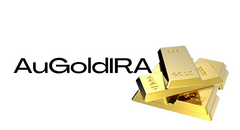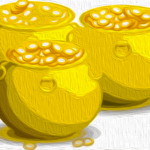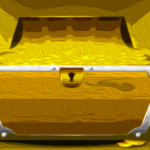Hey there, crypto enthusiasts! If you've been keeping an eye on Bitcoin, you might have noticed that it's taken a bit of a tumble, dropping more than 30% from its recent peak in October. Currently, it's hovering around $87,000, having slipped another 1% overnight. This downward trend has been quite the rollercoaster ride for traders, catching many off guard.
While the pace of selling has eased up a bit, the overall sentiment in the markets remains fragile.
What's causing this? Well, it seems like there's a general sense of caution prevailing across the globe. The S&P 500 futures are showing a slight negative trend following a strong rebound, with mixed trading in Asia and a flat-to-lower opening in Europe. Interestingly, Bitcoin seems to be behaving more like a high-risk tech asset than a macroeconomic hedge lately, showing a strong correlation that has intensified in recent weeks.
So, where does this leave us? Bitcoin's price is back around a critical support level, with analysts pointing to the $80,000–$83,000 range as the battleground. This zone has already acted as a safety net for Bitcoin a couple of times this month, including a recent drop to $80,915. However, each test weakens the floor a bit more.
Whale Watching: Mixed Signals from Big Players
Here's an interesting twist to the story. New data from on-chain analytics is showing some intriguing movements among big Bitcoin holders. Wallets with at least 100 BTC, often considered mid-tier whales, have been on the rise again after hitting a two-year low. This increase, equivalent to 91 new whale entities, suggests a hint of early bargain hunting among these holders.
On the flip side, larger whale wallets holding over 1,000 BTC are shrinking, with the biggest whales (those owning 10,000 BTC or more) reducing their holdings by about 1.5% in October. According to Citi analysts, the market might be lacking the usual influx of spot inflows needed to stabilize prices, estimating that around $1 billion in weekly inflows would be necessary to drive a 4% increase in Bitcoin's price, which is currently missing.
Are we in for a rebound or a plunge?
Over the past weekend, Bitcoin managed to bounce back to $86,000 after the recent crash, but the recovery seemed shaky. Each attempt to climb has been met with selling pressure around the mid-$80K levels. Earlier today, during Asian trading hours, Bitcoin briefly touched above $89,000 before retracing back to $87,000.
This hesitation is reflective of the broader economic landscape. Despite talks of a potential rate cut in December due to soft labor data, the Federal Reserve remains data-dependent, leaving traders in a state of uncertainty. The optimism surrounding rate cuts was a major driver behind Bitcoin's surge above $100,000 earlier this year, but now, it's a different story.
As institutional outflows persist and regulatory concerns loom, traders are facing a mixed bag of challenges. While some technical analysts foresee a retest of $70,000, others believe that if Bitcoin can hold above $84,000, there's still hope for a push towards $91,400 and $94,000. However, breaking below $84,000 could pave the way for a slide towards $75,000, possibly dipping further into the $72,000–$69,000 support zone.
Staying Strong Amidst Volatility
Remember, Bitcoin has weathered many storms in the past. With 30% price drops being a common occurrence, long-term holders have learned to navigate through these turbulent times. As Anthony Pompliano highlighted, Bitcoin has experienced 21 such dips in the last decade, with some plunges exceeding 50%. So, while the current scenario might seem daunting, it's essential to keep perspective.
For now, all eyes are on the charts, whale movements, regulatory developments, and individual nerves. Bitcoin, priced at $86,819, may be bruised but definitely not broken, awaiting its next big catalyst. Stay tuned!
Frequently Asked Questions
Can I have physical gold in my IRA
Not just paper money or coins, gold is money. People have used gold as a currency for thousands of centuries to preserve their wealth and keep it safe from inflation. Investors use gold today as part of their diversified portfolio, because it tends to perform better in times of financial turmoil.
Many Americans now invest in precious metals. It is possible to make money by investing in gold. However, it doesn't guarantee that you'll make a lot of money.
Another reason is the fact that gold historically has performed better than other assets in times of financial panic. Between August 2011 to early 2013, gold prices rose close to 100 percent while the S&P 500 fell 21 per cent. During those turbulent market conditions, gold was among the few assets that outperformed stocks.
Another benefit to investing in gold? It has virtually zero counterparty exposure. You still have your shares even if your stock portfolio falls. Gold can be worth more than its investment in a company that defaults on its obligations.
Gold provides liquidity. This means you can easily sell your gold any time, unlike other investments. Because gold is so liquid compared to other investments, buying it in small amounts makes sense. This allows you to take advantage of short-term fluctuations in the gold market.
How to open a Precious Metal IRA
It is important to decide if you would like an Individual Retirement Account (IRA). If you do, you must open the account by completing Form 8606. Next, fill out Form 5204. This will determine the type of IRA that you are eligible for. This form should be completed within 60 days after opening the account. After this, you are ready to start investing. You can also contribute directly to your paycheck via payroll deduction.
For a Roth IRA you will need to complete Form 8903. Otherwise, the process will be identical to an ordinary IRA.
To qualify for a precious-metals IRA, you'll need to meet some requirements. The IRS states that you must be at least 18 and have earned income. Your earnings cannot exceed $110,000 per year ($220,000 if married and filing jointly) for any single tax year. And, you have to make contributions regularly. These rules apply whether you're contributing through an employer or directly from your paychecks.
You can use a precious-metals IRA to purchase gold, silver and palladium. However, physical bullion will not be available for purchase. This means you won't be allowed to trade shares of stock or bonds.
You can also use your precious metallics IRA to invest in companies that deal with precious metals. This option is available from some IRA providers.
An IRA is a great way to invest in precious metals. However, there are two important drawbacks. First, they aren't as liquid than stocks and bonds. It is therefore harder to sell them when required. They don't yield dividends like bonds and stocks. So, you'll lose money over time rather than gain it.
Is gold buying a good retirement option?
Although buying gold as an investment might not sound appealing at first, when you look at the average annual gold consumption worldwide, it is worth looking into.
Physical bullion is the most popular method of investing in gold. But there are many other options for investing in gold. You should research all options thoroughly before making a decision on which option you prefer.
For example, purchasing shares of companies that extract gold or mining equipment might be a better option if you aren't looking for a safe place to store your wealth. If you need cash flow to finance your investment, then gold stocks could be a good option.
You can also put your money in exchange traded funds (ETFs). These funds allow you to be exposed to the price and value of gold by holding gold related securities. These ETFs can include stocks of precious metals refiners and gold miners.
How much of your portfolio should be in precious metals?
Before we can answer this question, it is important to understand what precious metals actually are. Precious metals have elements with an extremely high worth relative to other commodity. This makes them valuable in investment and trading. Gold is by far the most common precious metal traded today.
There are many other precious metals, such as silver and platinum. The price of gold tends to fluctuate but generally stays at a reasonably stable level during periods of economic turmoil. It also remains relatively unaffected by inflation and deflation.
The general trend is for precious metals to increase in price with the overall market. However, the prices of precious metals do not always move in sync with one another. For example, when the economy is doing poorly, the price of gold typically rises while the prices of other precious metals tend to fall. This is because investors expect lower interest rates, making bonds less attractive investments.
Contrary to this, when the economy performs well, the opposite happens. Investors choose safe assets such Treasury Bonds over precious metals. Since these are scarce, they become more expensive and decrease in value.
You must therefore diversify your investments in precious metals to reap the maximum profits. Furthermore, because the price of precious Metals fluctuates, it is best not to focus on just one type of precious Metals.
What are the advantages of a IRA with a gold component?
There are many benefits to a gold IRA. It can be used to diversify portfolios and is an investment vehicle. You decide how much money you want to put into each account, and when you want it to be withdrawn.
You have the option of rolling over funds from other retirement account into a gold IRA. This allows you to easily transition if your retirement is early.
The best part is that you don't need special skills to invest in gold IRAs. They're available at most banks and brokerage firms. Withdrawals are made automatically without having to worry about fees or penalties.
There are, however, some drawbacks. Gold is historically volatile. Understanding why you invest in gold is crucial. Are you looking for growth or safety? Are you trying to find safety or growth? Only after you have this information will you make an informed decision.
If you plan on keeping your gold IRA alive for a while, you may want to consider purchasing more than 1 ounce of pure gold. A single ounce will not be sufficient to meet all your requirements. Depending upon what you plan to do, you could need several ounces.
You don't need to have a lot of gold if you are selling it. Even one ounce is enough. You won't be capable of buying anything else with these funds.
Statistics
- You can only purchase gold bars at least 99.5% purity. (forbes.com)
- Indeed, several financial advisers interviewed for this article suggest you invest 5 to 15 percent of your portfolio in gold, just in case. (aarp.org)
- Instead, the economy improved, stocks rebounded, and gold plunged, losing 28 percent of its value in 2013. (aarp.org)
- Contribution limits$6,000 (49 and under) $7,000 (50 and up)$6,000 (49 and under) $7,000 (50 and up)$58,000 or 25% of your annual compensation (whichever is smaller) (lendedu.com)
- Gold is considered a collectible, and profits from a sale are taxed at a maximum rate of 28 percent. (aarp.org)
External Links
law.cornell.edu
- 7 U.S. Code SS 7 – Designation of boards of trade as contract markets
- 26 U.S. Code SS 408 – Individual retirement accounts
irs.gov
investopedia.com
forbes.com
- Gold IRA: Add Some Sparkle To Your Retirement Nest Egg
- Understanding China's Evergrande Crisis – Forbes Advisor
How To
The History of Gold as an Asset
From ancient times to the beginning of the 20th century, gold was used as a currency. It was universally accepted and loved for its beauty, durability, purity and divisibility. Due to its value, it was also internationally traded. Different weights and measurements existed around the world, however, because there were not international standards to measure gold. For example, one pound sterling in England equals 24 carats; one livre tournois equals 25 carats; one mark equals 28 carats; and so on.
The United States started issuing American coins in the 1860s made of 90% copper and 10% zinc. This led to a decline in demand for foreign currencies, which caused their price to increase. The United States began minting large quantities gold coins at this time, which led to a drop in the price. Because the U.S. government had too much money coming into circulation, they needed to find a way to pay off some debt. They sold some of their excess gold to Europe to pay off the debt.
Most European countries distrusted the U.S. Dollar and began to accept gold as payment. Many European countries started to accept paper money as a substitute for gold after World War I. The price of gold rose significantly over the years. Today, although the price fluctuates, gold remains one of the safest investments you can make.
—————————————————————————————————————————————————————————————-
Based on [POSTTITLE]
by [POSTAUTHOR]
















